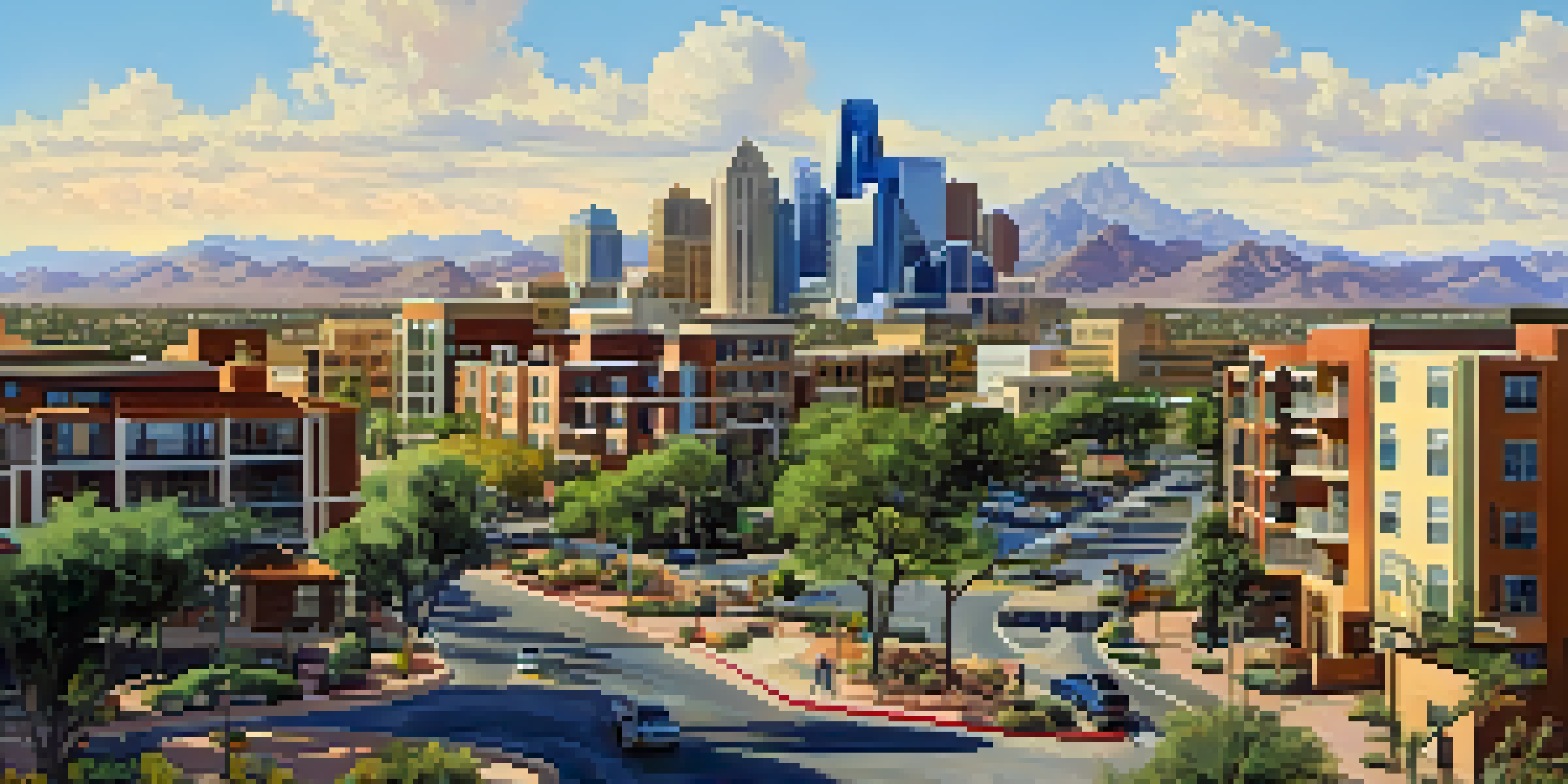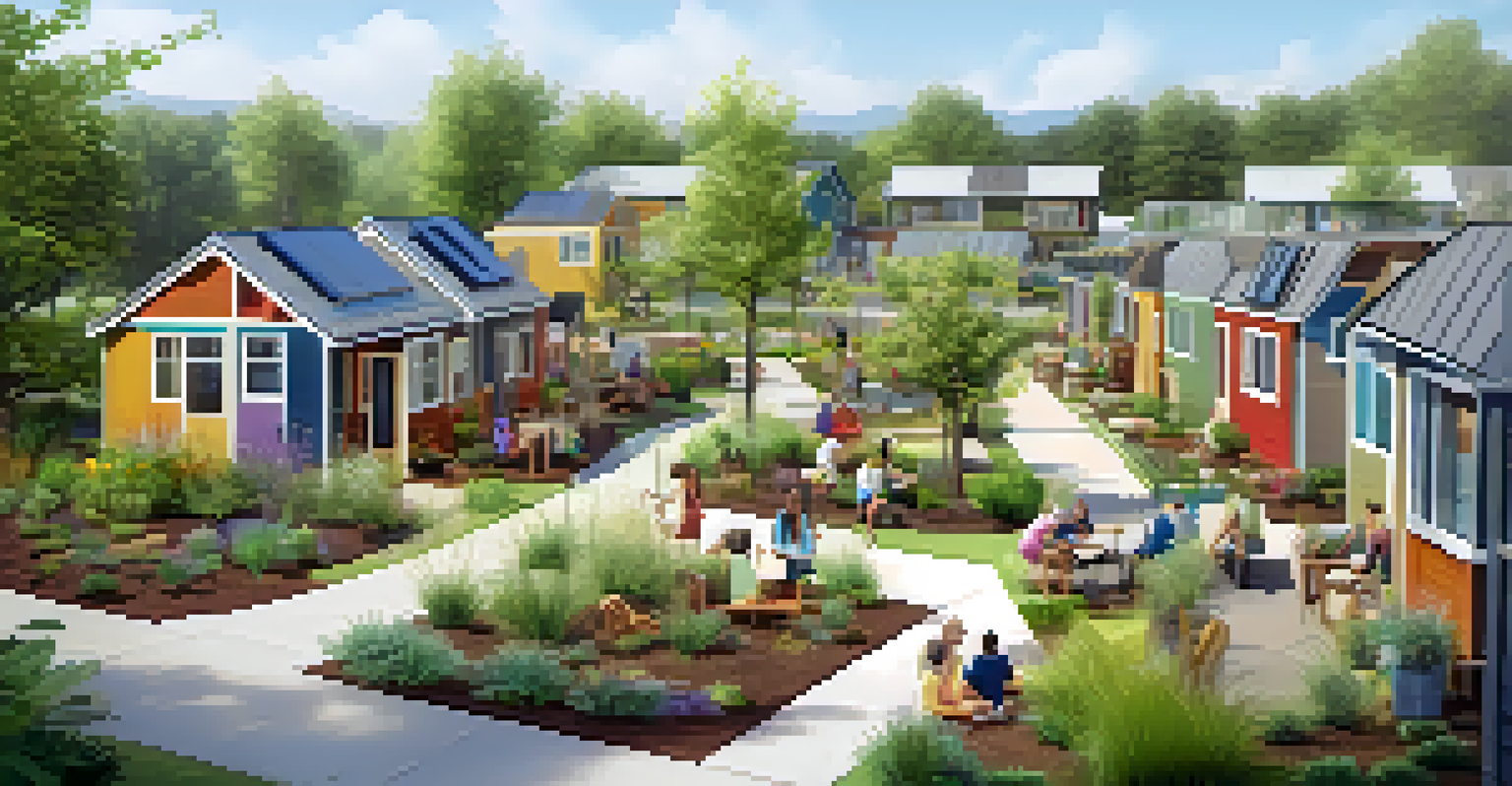Future of Affordable Housing in Arizona's Major Cities

Understanding Arizona's Affordable Housing Landscape
Arizona's affordable housing situation has become a pressing issue, especially in major cities like Phoenix and Tucson. With a growing population and increasing demand for housing, the need for affordable options is more crucial than ever. Many families are struggling to find homes that fit their budgets, leading to concerns about housing stability in the region.
Affordable housing is not just a necessity; it is a right. Everyone deserves a safe place to call home.
The state has seen significant economic growth, which, while beneficial, has also contributed to rising housing costs. As developers focus on luxury apartments and high-end homes, lower-income families find themselves squeezed out of the market. This creates a need for innovative solutions to ensure everyone has access to safe and affordable housing.
In response to these challenges, local governments and organizations are beginning to explore new strategies. From incentivizing developers to build affordable units to creating community land trusts, there are various paths being considered to address this urgent issue.
Impact of Population Growth on Housing Demand
Arizona's population has been steadily increasing, with people drawn to the state for its warm weather and job opportunities. This influx has heightened the demand for housing, particularly in urban areas. As more people move to cities like Phoenix, the competition for available homes drives prices up, making affordability a significant concern.

For instance, the average home price in Phoenix has skyrocketed in recent years, leaving many residents struggling to keep up. This has led to a rise in the cost of renting, pushing low-income families further from city centers where jobs and services are concentrated. As a result, many are forced to consider less desirable areas or even face homelessness.
Affordable Housing Crisis in Arizona
Arizona faces a pressing affordable housing crisis, particularly in major cities like Phoenix and Tucson, due to rising costs and increasing demand.
Recognizing the correlation between population growth and housing demand, city planners are reevaluating zoning laws. By promoting higher-density housing and mixed-use developments, they aim to accommodate the growing population while maintaining affordability.
Government Initiatives to Foster Affordable Housing
To combat the affordable housing crisis, Arizona's government is implementing various initiatives. Programs aimed at increasing funding for affordable housing projects are gaining traction, providing developers with the financial support needed to create more units. This is essential, as many private developers are reluctant to enter the affordable housing market without government incentives.
The best way to predict the future is to create it.
Additionally, state and local governments are working to streamline the permit process for affordable housing developments. By reducing bureaucratic red tape, they hope to encourage more construction and expedite the time it takes to bring new homes to market. This can significantly impact the availability of affordable housing in the short term.
Lastly, local governments are exploring partnerships with non-profit organizations to develop affordable housing. These collaborations can leverage resources and expertise, providing a much-needed boost to the affordable housing sector in Arizona's major cities.
The Role of Private Sector in Affordable Housing
While government initiatives are vital, the private sector also plays a crucial role in addressing affordable housing needs. Developers are beginning to recognize the potential for profit in affordable housing projects, especially as demand continues to rise. By creating mixed-income developments, they can offer lower-priced units while still catering to higher-income residents.
Innovative financing models are emerging, allowing private developers to build affordable housing without sacrificing quality or profitability. For example, some developers are utilizing tax credits and grants to offset costs, making the creation of affordable units more feasible. This approach not only benefits developers but also enhances community diversity.
Government and Private Sector Roles
Both government initiatives and private sector involvement are crucial in creating affordable housing solutions through funding, partnerships, and innovative development.
Moreover, public-private partnerships are gaining momentum as a way to tackle the affordable housing crisis. By combining resources and expertise, these partnerships can lead to innovative solutions that address the unique challenges of each community.
Community Involvement in Housing Solutions
Community engagement is a vital ingredient in developing effective affordable housing solutions. Neighborhood organizations and residents often have valuable insights into the specific needs and challenges of their communities. When local voices are included in the planning process, solutions can be tailored to meet those needs more effectively.
For instance, community forums have been established in several Arizona cities, allowing residents to voice their concerns and suggest potential solutions. These discussions can lead to a greater sense of ownership and investment in housing projects, ultimately fostering community support for new developments.
Furthermore, grassroots movements are advocating for policies that prioritize affordable housing. By raising awareness and mobilizing support, these groups can influence local government decisions and push for more inclusive housing strategies.
Innovative Housing Models to Consider
As Arizona grapples with its affordable housing crisis, innovative housing models are emerging as potential solutions. Concepts like tiny homes and co-housing communities are gaining popularity, providing affordable alternatives that challenge traditional notions of housing. These models not only reduce costs but also foster a sense of community among residents.
Moreover, adaptive reuse of existing buildings is becoming a viable option in urban areas. Transforming old warehouses or schools into affordable housing units not only preserves the character of neighborhoods but also maximizes available space. This approach can help address the housing shortage without the need for new land development.
Community Engagement is Essential
Community involvement is vital for effective housing solutions, as local insights help shape developments that meet the specific needs of residents.
Finally, modular housing is another innovative solution that could revolutionize affordable housing construction. These prefabricated units can be built quickly and efficiently, significantly lowering costs and making it easier to respond to housing demand.
Looking Ahead: The Future of Affordable Housing in Arizona
The future of affordable housing in Arizona's major cities is uncertain but filled with potential. With a combination of government initiatives, private sector involvement, and community engagement, there is hope for more sustainable housing solutions. However, addressing the crisis requires a concerted effort from all stakeholders involved.
As we look ahead, it will be essential for policymakers to prioritize affordable housing in their agendas. By recognizing the importance of stable housing for economic growth and community well-being, they can create a framework that supports diverse housing options for everyone.

Ultimately, the path forward hinges on collaboration, creativity, and a commitment to inclusivity. By embracing innovative solutions and engaging the community, Arizona can work toward a future where affordable housing is accessible to all.